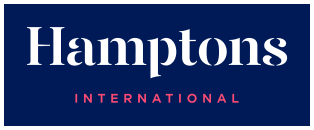Second quarter rental data shows improved tenant payments
Category Rentals
The good news for landlords is that after the struggles of the early Covid-19 period, tenant payments continue to improve, and the overall health of the rental market reflects very positively according to the TPN Rental Monitor for the second quarter of 2022.
Seeff’s rental agents nationwide also report that the rental market seems to have recovered from the pandemic challenges and is holding up well despite rising costs and interest rates and the potential impact on tenant wallets.
TPN says rental payments are a vital household budget credit priority and is second only to home loan repayments. Despite the deteriorating economic climate, the rentals monitor shows that rental payments in the upper to mid-level brackets appear to be in the best standing ever.
87% of tenants in the rental bracket between R12,000 and R25,000 per month are in good standing and some 88% of these tenants are up to date with their monthly rental payments. This is better than what the position was in the pre-pandemic years of 2018 and 2019.
Contrastingly, only 77.38% of tenants in the rental bracket above R25,000 per month are in good standing.
The rental bracket between R3,000 to R7,000 per month comprises the largest portion of the rental market. While their good standing improved to 82.8%, it is still not back to pre-pandemic levels. TPN, however, does assess it to be on the path of improvement.
Regional differences are always evident
Western Cape – 86.61% of tenants are in good standing. The vacancy rate has remained stable while rental rates increased by 4.17% year-on-year as measured in the second quarter.
Gauteng – in second place with 80.96% of tenants in good standing, although this is notably weaker compared to the Western Cape. The Gauteng vacancy rate is 6.67% which is the second lowest of the major provinces, although it is expected to grow as supply is added. The province also struggles to achieve higher rates with rentals growing at only 1.69% year-on-year.
KwaZulu-Natal – 80.16% of tenants are in good standing while the vacancy rate remains high at 9.91%. However, the province continues to have the highest escalation rate of all provinces at 4.78%.
Free State and Northwest Provinces – both provinces are struggling with rental collections due to high unemployment (40.3% and 49.2% respectively).
Average rental rates continue to increase across the provinces
According to Payprop the overall year-on-year growth in rental rates continued to improve to 2.5% as measured for the second quarter.
Western Cape – remains the most expensive province for rentals which now average at R9,462 - up by 3% from R9,185 in 2021.
Northern Cape - remains the second most expensive province with a rental rate of R8,626 - up year-on-year by 6% from R7,910 in 2021.
Mpumalanga – the second highest rental growth in the country and now commands an average rental of R7,870 - up by 5.2% from R7 484 in 2021.
Limpopo – average rental rate of R7,350 from R7,017 which is a growth of 4.7%.
According to TPN the rising costs and interest rates faced by tenants may well start impacting the rental market and we could also see many opting to rent rather than purchase right now.
Seeff’s agents continue reporting a stable rental market, but cautions landlords to work with a credible rental agent to ensure they get the right advice and assistance for the current market conditions.
Author: Gina Meintjes




 Beyond your expectation
Beyond your expectation